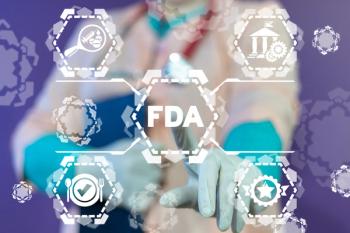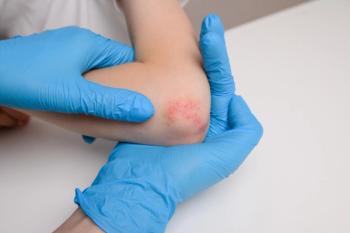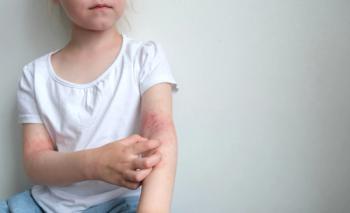
Atopic Dermatitis Treatment May Contribute to Elevated Staphylococcus Aureus Mutations
Investigators theorize that the inflamed skin of AD patients or treatments they are undergoing could contribute to an elevated mutation rate.
The pathogen Staphylococcus aureus (S. aureus) often invades the inflamed skin of people with atopic dermatitis (AD), worsening the disease by increasing skin damage. S. aureus is found on healthy skin but appears in higher numbers on diseased skin because it exploits the fragile skin barrier. Researchers sought to understand the impact of de novo microbiome mutations on diseases such as AD.1
AD develops at different rates and severity and although factors such as genetic differences or environmental defects in barrier function explain some of the differences in response to treatment, they do not explain them all.
To identify mutations acquired by S. aureus that develop under natural selection, researchers conducted a prospective, longitudinal study of 23 children aged 5 to 15 with moderate to severe AD in Mexico. Over the course of 9 months and 5 visits, patients were prescribed standard treatments, including topical steroids, emollients, and bleach baths.
The scoring AD (SCORAD) scale was used at each visit to assess disease severity. Swabs of both healthy and affected skin were taken from 7 sites at each visit. “From each of the 225 swabs that yielded growth resembling S. aureus, we picked up to 10 single-colony isolates for subculture and sequencing, resulting in 1,499 S. aureus whole genomes.”1
Most participants were consistently colonized by a single major lineage of S. aureus. Researchers estimated the molecular clock of the lineages for 6 of the patients with the most isolates. The results showed that AD-affected skin did not have a significant effect on S. aureus mutation rates.
Over time two patterns of on-person evolution are produced, either diversification into long co-existing genotypes or within-lineage genotypic replacement. Study analyses suggested that within-lineage genotypic replacement of S. aureus was more common on the AD skin.
Investigators theorize that the inflamed skin of AD patients or treatments they are undergoing could contribute to an elevated mutation rate.
The researchers found, “...that S. aureus rapidly adapts via de novo mutations on people being treated for AD, that adaptive mutants spread across the whole body—including the nares—and that loss-of-function mutations in an S. aureus gene closely associated with virulence, capD, are more frequent on the skin of people with AD than healthy controls.”1 Findings supported the role of on-person de novo mutation on patients with AD instead of transmission from another person.
Researchers also noted mutations in capD, which could offer a survival advantage to S. aureus on AD skin.
Reference
1. Key FM, Khadka VD, Romo-González C, et al. On-person adaptive evolution of Staphylococcus aureus during treatment for atopic dermatitis. Cell Host Microbe. 2023;31(4):593-603.e7. doi:10.1016/j.chom.2023.03.009
Newsletter
Pharmacy practice is always changing. Stay ahead of the curve with the Drug Topics newsletter and get the latest drug information, industry trends, and patient care tips.


















































































































